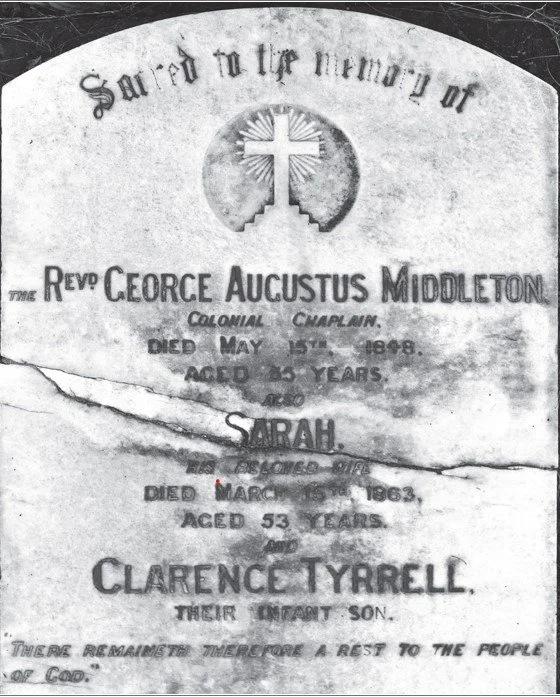Rev George Middleton
It is just over 200 years since the arrival of the first ordained Anglican minister to the Hunter Valley. In July 1821 George Middleton and John de Marquet Blaxland, with convict servants and 174 head of Middleton's cattle, ‘discovered’ a new route from Sydney to Newcastle by following an Aboriginal trading path known as the Boree Track. It took them into the Wollombi Valley where they turned east towards Newcastle. They marked the track so well that absconding convicts followed it, and it quickly became known as ‘the Parson's Road’.
The Parson was the Reverend George Augustus Middleton. Born in London in 1791, he was ordained as a priest for the colonies in 1819 and arrived in Sydney in 1820. He worked as Assistant Chaplain at Parramatta, standing in for the Reverend Samuel Marsden. In 1821 he was appointed to the convict settlement at Newcastle.
This is why Middleton and Blaxland drove the cattle overland from Sydney – they were headed for the Paterson River where Middleton had selected 400 acres of glebe land on the west bank of the river where the southern portion of Tocal College now stands. The glebe was given to support him in his new role as chaplain to the penal settlement at Newcastle. This was common practice with Church of England ministers in those days.
The first properties at Paterson’s Plains, including Middleton’s glebe.
(Brian Walsh, Woodville Uncovered, 2021, p 15)
Middleton at Paterson’s Plains
In October 1821, Middleton travelled up-river from Newcastle to perform Divine Service for the settlers at Paterson River. Prior to his arrival there was no formal provision for the spiritual needs of the gangs of convict timber cutters or their guards who had been operating there since 1804, or the settlers on small blocks dotted along the river at Paterson's Plains from 1812.
Rev Middleton resigned his position in 1827 to avoid a transfer to Port Macquarie. He surrendered his glebe and moved to his own land grant, ‘Glenrose’, which comprised 2000 acres of high country west of ‘Tocal’ at the headwaters of Webbers Creek. From ‘Glenrose’ he continued his Christian ministry on an unofficial, unpaid basis.
In 1831 drought forced Middleton to move to Sydney but his wife and family remained in a rented house on 20 acres on Phoenix Park, directly across the river from Hinton.
Middleton had the outstanding ability to understand Aboriginal culture and lifestyle. He treated Aboriginal people with great humanity and enjoyed many outings with them around Newcastle. He joined them in hunting, fishing and feasting on oysters, and at times camped overnight among them.
In contrast, Middleton was intolerant of officials and officialdom. He fell out with the Commandant at Newcastle, Major James Morisset, and he lost the support of the first Archdeacon of the Australian Church, Thomas Hobbes Scott to whom Middleton was answerable for his ministry. The Evangelical branch of the church also accused Middleton of being devoid of spirituality and depth in his ministry and teaching.
His Paterson River flock knew better. Middleton related to his people as a husband, parent, farmer, bushman and someone who had experienced the same grief, struggles and failures that they endured. Even though he was unlicensed from 1827, Middleton's unofficial Christian ministry never faltered and, finally, he was allowed back into the Anglican fold.
In 1837 he returned from Sydney permanently and was licensed to serve in the parishes of Butterwick and Seaham, in today's Woodville district.
Middleton died in 1848 and is buried in the Morpeth Cemetery.
The Rev Middleton’s headstone in the Morpeth Cemetery.
References
Blaxland, John de Marquet, Journal at Wallis Plains 14 February to 31 August 1821, State Library NSW, ML C128, reel CY1480.
Brouwer, David, Seven Little Churches of the Paterson Valley, Paterson Historical Society, 2020.
Roach, Brian, ‘George Augustus Middleton – A Prodigal Priest?’, MA thesis, University of Newcastle, 2003.
Walsh, Brian, ‘Our past: 200th anniversary of the first ordained Anglican minister in the Hunter’, Maitland Mercury, 16 July 2021.


